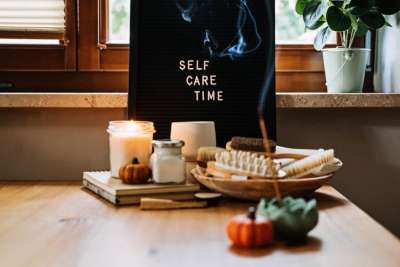Change is the only constant, and we have all been challenged in ways that we’ve never experienced before. You may have felt as though you were on this perpetual hamster wheel of life. Uncertainty, instability, and constant change can wreak havoc on our day-to-day lives, and on our nervous systems.
Start by Stopping
Are you feeling ready to step off the hamster wheel and take a breather? Let’s start by stopping. Let’s take a collective exhale together, right now. Relax your shoulders. Unclench your jaw. Take a big deep breath in….hold slightly... and then a long slow exhale out. Feel better? Maybe. If so, keep going and do a few more. Seems simple enough, right? How can such a basic practice of slow rhythmic breathing support us?
Calming Your Nervous System
Think of it this way; If your body is the house, then your nervous system is your security system. It is constantly working on your behalf to alert you to potential danger and it also brings you back to baseline after a stressful event. Deep, slow, rhythmic breathing is what informs the alarm system that you are ok, the threat is gone, and that you can come back to baseline. Taking a deeper, fuller breath is one of the fastest, most effective ways to trigger the relaxation response and calm the nervous system. The lower lobes of the lungs contain many of the parasympathetic nerve receptors, whereas many of the sympathetic nerve receptors are housed in the upper lobes. Rapid, shallow breaths stimulate the sympathetic nervous system. Deep abdominal breathing brings air into the lower lobes of the lungs, stimulating the parasympathetic nervous system and inducing an overall state of relaxation.
Just Breathe
Every relaxation, calming, or meditation technique relies on breathing, which may be the lowest common denominator in all the approaches to calming the body and mind. Research into basic physiology and into the effects of applying breath-control methods lends credence to the value of monitoring and regulating our inhalations and exhalations.
Focus Your Thoughts
Paying attention to breathing causes most people to slow it down and deepen it, which is calming. Cognitive resources are limited, so when you concentrate on breathing, you are not thinking about your worries! Those who practice mindfulness learn to notice when their attention drifts away from breathing and goes back to their concerns, and they train themselves to return periodically to their breathing. This refocusing has a relaxing effect on anyone and helps to combat ruminative thinking in people who have anxiety or depression, especially those who are particularly prone to negative thoughts that run in a loop.
When was the last time you thought about your breathing?
Prioritize Mindfulness
Whether professionally or personally, caring for others can take a toll on us. Teachers know this all too well. To reinstate balance, we need opportunities for self-regulation, self-awareness, and self-care. Give yourself the gift of that time. When seeking solutions to both mental and physical ailments that prevent us from living life to the fullest, prevention is the key.
Science is proving that practicing mindfulness meditation is a key component to supporting our mental health and helps to shape a more positive outlook on life. And breath awareness is a foundational mindfulness practice. Mindfulness helps us put some space between ourselves and our reactions, breaking down our conditioned responses.
Tunning into Mindful Moments
Set aside some time.
You don’t need a meditation cushion or bench, or any sort of special equipment to access your mindfulness skills—but you do need to set aside some time and space.
Observe the present moment as it is.
The aim of mindfulness is not quieting the mind, or attempting to achieve a state of eternal calm. The goal is simple: we’re aiming to pay attention to the present moment, without judgment. Easier said than done, we know.
Let your judgments roll by.
When we notice judgments arise during our practice, we can make a mental note of them, and let them pass.
Return to observing the present moment as it is.
Our minds often get carried away in thought. That’s why mindfulness is the practice of returning, again and again, to the present moment.
Be kind to your wandering mind.
Don’t judge yourself for whatever thoughts crop up, just practice recognizing when your mind has wandered off, and gently bring it back.
When we feel better we do better. So get still, my friends. Keep breathing. And remember, peace begins within.
By Heidi Woods | Mindfulness Educator












